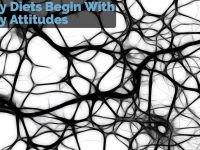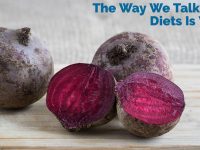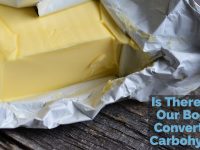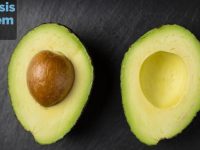I live in Boulder, CO, a city well-known for its “enlightened” attitudes towards food; I’m not sure you’re allowed to live within the city limits without an opinion on food, nutrition, or diets. On the one hand, it brings up some funny juxtapositions, such as the paradox that is the Boulder Whole Foods—a grocery store owned by a conservative vegan in liberal town that caters largely to paleo dieters. On the other hand, our “cutting edge” approach towards nutritional fads, and refusal to let science dictate the course, ensures that we have more choice than is perhaps healthy.
Choice, by itself, isn’t bad. We need some choice. And there are some things that we could use more choice in. But the proliferation of alternative milks that are now available to me is one I’m not convinced of.
Perhaps that’s not fair—most milks serve some purpose, and none are “bad choices”. The problem is that the proliferation of alternative milk options has muddied our collective knowledge about what’s “healthy” and what’s not. It’s hard to look at an entire aisle of alternative milks (yes, these exist in most of the natural food stores in my town) and not think to yourself, “Hmm… I wonder what’s wrong with dairy?” This is a shame—because nutritionally, there’s really nothing wrong with dairy milk.
My goal with this article, then, is to review the various milks available—What’s good about them? What’s bad? What controversies exist? What does the science say? Ultimately, I don’t really care what milk you drink, I just want you to be clear about the data! Most importantly, I don’t want you to be one of the people spreading misinformation about the supposed health benefits or drawbacks to a particular milk.
With that said, let’s look at the milks themselves.
Dairy Milks
Fair or not, dairy milks are the standard against which every alternative milk is judged. This means adding vitamins and minerals to most alternative milks in order to bring their nutritional profiles closer to dairy’s, which is good news for those who cannot or choose not to drink dairy milk as it provides an alternative source for calcium, vitamin D (which is also an added nutrient for dairy), and vitamin B12 (among others).
While dairy milks don’t provide perfect nutrition to humans, they are—in a pure sense of the word—very nutritious. No other milk comes close to offering the same abundance of macronutrients (carbohydrates, fats, and protein), vitamins, and minerals. In the United States, dairy is a significant source of:
- Protein
- Vitamin A (Fortified Milk Only)
- Vitamin B2
- Vitamin B12
- Vitamin D (Fortified Milk Only)
- Calcium
- Iodine
- Potassium
…and a lesser source of many other nutrients.
Dairy milk isn’t for everyone—a significant percentage of people in the world become lactose intolerant around age 2-5, and some are allergic—but if you can tolerate it and don’t have any ethical objections to it, it’s hands-down the best choice.
Is Dairy Healthy and Does Milk Fat Percentage Matter?
Most people have a preference for one type of milk over another, whether whole, skim (fat-free), or somewhere in-between. On paper, skim may seem like the “healthiest” choice due to its lower calorie content, but this hypothesis is not borne out by research. Rather, the opposite seems to be true—though there is also good reason to be suspect of that correlation since it’s more likely that overweight and obese individuals switch to skim and lower fat milk out of hope for weight loss rather than such products causing weight gain in the first place (i.e., the same sort of correlation exists here as does with diet sodas).
How about the correlation between dairy and weight loss, which is commonly trotted out as marketing material for the dairy industry? Again, it’s unlikely that milk will have any strong effect long-term—though the additional protein may be beneficial for reducing muscle loss during a diet.
Overall, the sum of the research suggests that neither milk fat nor milk intake strongly affects your weight or health aside from the contribution of calories, and that there’s no real reason to choose one over the other. If the (dairy) milk you’re currently drinking works for you and your goals, then changing it is unlikely to do anything unless milk is an extremely large part of your diet (e.g., more than a quart or liter daily).
What About Beta-Casein?
Since the explosion of alternative milks in the grocery scene, it seems like dairy milk has gotten a bad rap by association—e.g., many people who are otherwise capable of drinking milk may misunderstand milk to be unhealthy given the plethora of alternatives popping up. To compound matters, dairy is also subject to a range of unevidenced and disproven hypotheses, such as that it causes excess phlegm production, which may give rise to unnecessary fear.
One of the biggest health (or unhealth?) claims regarding milk revolves around a protein in milk known as casein—specifically, the A1 and A2 variants of beta-casein. In brief, over the past few decades there have been a handful of epidemiological studies that appear to show A1 beta-caseins to be injurious to health and A2 to be protective. In these studies, A1 beta-caseins are linked to everything from gut dysfunction (possible) to heart disease and diabetes (unlikely, but still in the realm of science) to autism (Red flag alert! We’re dealing with pseudoscience!). Since these problems cover a large swath of health territory, I’ll tackle them in focused bulletpoints:
- There is simply no (good) evidence that casein affects autism spectrum disorders. Despite elegant hypotheses, a casein-free diet (along with gluten-free diets, by the by) has never been shown to have any effect on those with an autism spectrum disorder.
- If A1 casein affected heart disease, we should see increased risk of heart disease in populations that drink a lot of milk. Instead, we see little association or possibly even a negative association (meaning less heart disease) depending on the specifics. This suggests that any perceived link between A1 casein and heart disease is just that—perceived, but not real.
- Type I Diabetes (the type A1 casein is linked to) appears in early childhood when most children are either breastfed or consume infant formula, which is usually limited in casein compared to normal milk; the association only appears when looking at adult milk consumption and overlaying that data on cases of infant Type I Diabetes. It’s as unlikely as it sounds that adults consuming more A1 milk would cause infant diabetes. There are other flaws with the hypothesis detailed in this review, as well.
- Of all the hypotheses, the A1 casein link to gut dysfunction is most probable, but still not quite in the realm of well-backed science. One recent study showed that A1 milk could possibly cause symptoms very similar to lactose intolerance. However, it’s possible that these symptoms were simply due to… well, lactose intolerance. The group used in the study were Han Chinese with self-reported lactose intolerance, and according to the study authors, approximately 51% of the participants (23 out of 45) were officially lactose intolerant. But other, much larger studies have found that upwards of 87% of Chinese have a deficiency in the lactase enzyme, which results in an impaired ability to digest lactose in a dose-dependent manner—basically, the less lactase you produce, you less milk you can drink before experiencing symptoms. Thus, even if some of their subjects did not display full-blow lactose intolerance, it’s highly likely they could not digest lactose as well as your typical human of Northern European descent, and I’m skeptical that two separate compounds in milk would cause identical symptoms. (Also, the study was funded by a company that produces A2 milk—not necessarily a deal-breaker, but pretty suspicious in light of the above.)
Maybe A1 milk causes some gut dysfunction, then, but probably not; it definitely doesn’t cause anything more serious. If you get bloated and gassy from milk, it doesn’t really matter if it’s lactose or A1 casein, your easiest solution is to drink something else!
Is Goat or Sheep Milk Significantly Different?
Aside from cow’s milk, goat milk is also a common dairy milk and occasionally you might find sheep’s milk, too. These milks have their own devoted followings, but alas, without solid reasoning, at least so far as health concerns go—arguments about cheese-making is another topic entirely.
One common “fact” you’ll hear in regards to goat milk is that it has less lactose; this is false. Goat milk and cow milk are extremely similar nutritionally, including their lactose content (sheep milk contains more lactose). If you’re lactose intolerant, you won’t be able to tolerate goat or sheep milk any better.
Goat and sheep milks are also often said to be less allergenic than cow’s milk, but the reality is that these three animal milks contain very similar proteins that demonstrate high levels of cross-reactivity. Officially, it is strongly suggested that those with cow’s milk allergies do not try goat or sheep milk since the chances of an allergic reaction are high. That being said, it is possible to be allergic to only cow, or only goat, or only sheep milk, and if you know that applies to you, there’s no reason to avoid any milk you don’t react to.
Aside from major health concerns, the three milks are nutritionally very similar. While they have some minor macro- and micronutrient differences (goat milk is fattier, sheep milk is fattier and has more protein, etc.), it’s not enough of a difference to justify changing.
Dairy Milks: The Good
- High in protein.
- High in many vitamins and minerals.
Dairy Milks: The Bad
- Not vegan.
- Contains lactose, a sugar most people can only digest in limited amounts without GI discomfort.
Soy Milk
Soy milk was the first alternative milk to really break into the market, but has since ceded its lead to almond milk, no doubt thanks to the (false) rumors that continue to haunt soy products (read more about why these rumors are false here). Really, this is a shame, because soy milk is probably the better alternative milk choice in most situations thanks to its greater protein content—without fortification, soy milk contains roughly 5-7 grams of protein, just shy of cow’s milk 8 grams.
Unfortunately, aside from the protein, soy milk doesn’t contain an abundance of other nutrients. This isn’t different from any other alternative milk, however—they’re all fortified to bring them in-line with cow’s milk, at least as far calcium, vitamin B12, vitamin A, and vitamin D are concerned.
Since I just covered the controversies surrounding soy in a recent article, I’m not going to cover them again, and there’s not much more to say about soy milk. The bottom line is that soy is safe, healthy, protein-rich, generally fortified to be nutritionally similar to dairy milk, and probably the best choice for an alternative milk unless you’re allergic.
Soy Milk: The Good
- High in protein.
- Fortified to contain most of the nutrients of dairy milk.
- Vegan.
Soy Milk: The Bad
- You’ll probably have to roll your eyes after the occasional lecture about the dangers of soy.
- Soy allergies are common (but still rare in the scheme of things)
Nut Milks (Including Hemp Milk)
One upon a time, the only nut milk you were likely to find at a grocery store was almond milk. Now, you can often find cashew, hazelnut, hemp (technically a “seed milk”) and perhaps a few others. Regardless of the varieties available, their nutrition will be similar because only a few nuts go into each cup of nut milk; most of the vitamins and minerals present (including vitamin E) are added.
Nut milks seem like a good idea health-wise, but they’re actually pretty empty; as I just mentioned, the majority of their nutrition comes from added vitamins and minerals. While nuts themselves are certainly healthy, there’s no benefit to drinking your nuts, and there are real downsides such as the loss of fiber (some fiber will remain, but anytime you lose the coarse bits you’re losing fiber, too). If you want the benefit of nuts, you’re better off eating them.
All that being said, there’s nothing unhealthy about them, either, though they don’t have protein benefit of soy milk unless they’re fortified with protein. They’re not a bad choice, they’re just neutral.
Nut Milks: The Good
- Usually very pleasant-tasting.
- Fortified to contain most of the nutrients of dairy milk.
- Vegan.
Nut Milks: The Bad
- Low in protein unless fortified.
- Nut allergies are a common allergy.
Rice Milk
Along with soy and almond milk, rice is one of the original “alternative milks” having a culinary tradition that predates modern nutritional zealotry and the drinks produced to appease it. As with nut milks, rice milk has very little inherent nutrition aside from what is added—after all, rice itself is a pretty poor food nutrition-wise, aside from calories.
Unsweetened rice milk is pretty bland, but a little sweetener brings out some pleasant tones from the rice. In some parts of the world, rice milk and almond milk are combined along with spices (such as cinnamon) to produce the delicious beverage horchata. I’m 100% for horchata. As for rice milk as a dairy replacement, you’re probably better off with other options unless you’re allergic or anathema to everything else—and even then only if you absolutely need some sort of milk substitute.
Rice Milk: The Good
- Hypoallergenic.
- Fortified to contain most of the nutrients of dairy milk.
- Delicious when consumed in the form of horchata.
- Vegan.
Rice Milk: The Bad
- Low in protein.
- Bland if not sweetened.
Coconut Milk
Coconut milk has been enjoying a surge in popularity in the past decade due to the overblown reports of the benefits of medium-chain fatty acids (MCFAs). These special fats, distinguished from their brethren by their length (6, 8, 10, or 12 carbons long), had been highlighted in a number of studies as being “anti-obesity” or beneficial for weight loss. The reality, as always, is a bit less bright than the news reported.
To begin with, it’s not even clear at this point whether medium-chain fats are as beneficial as some have studies have claimed, as a systematic review found inconsistent results. Honestly, though, this is a bit beside the point because using medium-chain fats to lose weight was never really as “easy” or “automatic” as people imagined. Every study that found positive results used large amounts of medium-chain fats—on the order of 18 grams or more per day—which would be impossible to achieve unless you actually used isolated medium-chain fats as your dietary fat of choice. Furthermore, these fats weren’t just added in, but rather replaced other fats that were in the diet; most studies had participants consume 66-75% of their daily fat in the form of medium-chain fats. That means ditching healthy foods like avocados, nuts, and yes, even coconuts, in favor of unadulterated medium-chain fats, which is questionable from a nutrition-perspective long-term even if weight loss results, and definitely more work than the typical person is willing to do.
Back to the coconuts, though. Coconuts are one of the few foods “rich” in medium-chain fats, which led to the explosion of health claims on the internet in regards to coconut milk and the ensuing popularity of the beverage. Unfortunately, the medium-chain fat that coconuts are rich in is not one of the fats shown to be beneficial to weight loss (octanoic acid and decanoic acid, with 8 and 10 carbons respectively), but rather lauric acid, which is 12 carbons long. Lauric acid is most well-known for raising cholesterol—though since it also raises HDL (good) cholesterol, it’s subject to debate as to its effects on cardiovascular health—and is not known to work in the same way as the shorter octanoic and decanoic acids.
As for the content of octanoic and decanoic acids in coconuts, it’s not very impressive: a tablespoon of coconut oil contains only 925 milligrams and 733 milligrams respectively, or about 1.66 grams. Dairy-style coconut milk contains an even paltrier amount, with only approximately 400 and 300 milligrams of each per cup. That means you’d need to drink about 26 cups (1.6 gallons, or 6.2 liters) of coconut milk daily to get the (very small) benefits reported in some studies, not just have a small coconut milk latte and call it good.
Wouldn’t there be a benefit from consuming even a small amount, though? Most likely not. Even when the participants of the above studies consumed massive amounts of pretty much only octanoic and decanoic acids, the resulting change in weight was very small. If we assumed (which we shouldn’t) that consuming a portion of the amount they consumed led to a portion of the resulting weight loss, then you might lose half a pound (or a quarter kilogram) in 20 years.
Aside from the touted health benefits, I’m not sure if there’s anything else fueling coconut milk’s popularity. Don’t get me wrong—I love coconuts, and am happy to use coconut milk (the canned stuff) in curries or whenever it’s called for—but coconut milk (the drink) has a rather weak, watery taste (so much so that several major producers in the US now package an almond coconut milk blend that helps improve the taste). As with the nut milks, it’s not a bad choice, but since it’s not even particularly pleasant tasting, it’s not one I would recommend (unless, of course, you do like the taste).
Coconut Milk: The Good
- Hypoallergenic.
- Fortified to contain most of the nutrients of dairy milk.
- May have a positive influence on your Total to HDL cholesterol ratio.
- Vegan.
Coconut Milk: The Bad
- Low in protein unless fortified.
- Disappointing in taste compared to every other coconut product ever produced.
- Has a patina of health that doesn’t hold up to scrutiny.
Making a Choice
Still confused after all this? Don’t stress too much. Milk is a single food—and often a relatively unimportant food—in most people’s diets; it’s unlikely to be the linchpin of your nutrition.
My recommendation is to stick with dairy milk for most purposes unless you cannot tolerate it, do not like the taste of it, or dislike the ethics of it. In such a case, soy is the second best option, followed by all the remaining alternative milks (including any that I may not have covered). But again, it’s not the end of the world if you can tolerate milk but choose to drink coconut milk—just don’t go around believing it’s a nutritionally superior choice!
Got concerns about a milk I didn’t discuss here (camel milk, anyone)? I’d love to answer any questions you have in the comments!















I use “alternative milks” (mostly soy) in smoothies because i dont wont to mix diary with fruit. Does this makes sense?
Not shure in this question belongs here, but for some time i was wondering if i should use soy milk for soy protein shakes, rice milk for rice protein shakes etc, so i dont mix difrent tipes of protein. Is this useless practice since they all taste better with diary or am i on to something?
Ty for your time
Depending on your motivations, it could make sense. If you don’t like the taste of fruit mixed with dairy, then finding a more palatable option is perfect. If you’re worried about the health implications of mixing fruit and dairy, however, you need not stress about it—the worst that will happen is curdling, which is harmless (though perhaps a bit off-putting). As for mixing proteins, there’s no need to be “pure” about it. In the end, all proteins are broken down into amino acids and di- and tripeptides, and mixing them has zero effect on our health (aside from possibly providing more or less of a particular amino acid; this is, in fact, the reason why some vegetarian protein advocates recommend mixing proteins, though as long as your diet is mixed it shouldn’t matter too much).
I think its a bit naughty to highlight “it causes excess phlegm production” as a disproven hypothesis and then link to one of your own web pages that doesn’t show any scientific study either proving or disproving the claim.
And what about acne? Personally I have dropped dairy- whilst correlation isn’t causation the spots I’ve suffered with for my entire adult life (I’m 39) pretty much disappeared within a week of giving it up. I tried putting the dairy back in and along came the spots again… Maybe there are a few downsides to dairy you haven’t taken into consideration.
Thank you Brian. This is a great blog and a great article, as usual. I’m glad I found an island of reason and common sense amid an ocean of bull s**t. Do you know of any benefits of raw dairy milk over pasteurized milk? Also should I be concerned about the presence of antibiotics and growth hormone in my milk? (Or is this just more overblown BS?)
Thanks, Jeff
You’re right, the article I linked to in regards to milk and phlegm production didn’t focus much on the topic, but only mentioned it in passing. In such passing, however, I did link to a couple studies (here and here) that found no evidence of increased mucus production, despite (as is so common) the a full belief in some participants that it would cause such a problem.
As for dairy and acne, the case is also rather unfounded. Some studies appear to show a link, but many others have not. Most studies that have shown a link have methodological flaws. The most recent review on the topic (here) wrote “on the basis of the existing evidence… the association between dietary dairy intake and the pathogenesis of acne is slim.” That doesn’t mean dairy couldn’t possibly cause acne, but it does suggest that if there is a link it is most likely minor, highly dependent on other factors (personal hormone levels, the milk itself, etc.), and not worth worrying about because there are other interventions that are more likely to produce better results for more people.
Thanks! There is certainly a cult following surrounding raw milk, but it’s unlikely to have any nutritional benefits over pasteurized milk as pasteurization destroys few nutrients (mostly vitamin C, which milk doesn’t have). It might taste better depending on the farm it comes from, however. Antibiotics aren’t a nutritional concern so much as an environmental one, as their overuse leads to increases in antibiotic resistance in bacteria; nutritionally, no antibiotics should be present in milk as cattle are required to be off-rotation when undergoing antibiotic treatment, and also because milk is tested for antibiotics and cannot have any antibiotic residue in it. Doesn’t mean it never happens, but the majority of the milk we drink should be clean (with the very small rest having only traces, not enough to cause harm). Growth hormone in milk (or food in general) is topic I’m going to tackle in an article or two, so you’ll have to excuse me until then to answer it!
1 Question and 1 Comment:
– “Growth hormone in milk (or food in general) is topic I’m going to tackle in an article or two” <- I look forward to it
– Why do cashew milk and hemp milk have no protein when in their raw form they are a pretty reasonable source of protein? Kind of baffles me that Soy Milk takes some of the protein from the raw material but hemp and cashew milk don't?
There are a couple reasons why soy beats out the nut/seed milks in terms of protein:
First, soybeans are a much richer source of protein than any nut or seed; for every one hundred calories of edible product (e.g., cooked soybeans and raw nuts/seeds), soy has roughly 10 grams of protein while most nuts and seeds have only 2-4 grams. Therefore, it’s easier to get a final product that is protein-rich as the raw product is better suited.
Second, most nut and seed milks are, for lack of a better term, “calorie or content-controlled”. A typical store-bought brand of almond milk, for example, contains about 8-9 almonds worth of “milk” per cup—you can’t get a lot of protein from 8 or 9 almonds. There are brands that contain a greater amount of protein per cup (such as “Malk”), but they are always more caloric, too, since you cannot increase the protein in a nut/seed milk without also increasing the fat content. Since nut/seed milks occupy a health-conscious sphere that interweaves fluidly with weight-consciousness, producers are loathe to make products that have more calories per cup than milk, and so they ensure they’re always lower-calorie (and thus lower-protein as well). In other words, it’s marketing.
Thanks for your reply Brian!